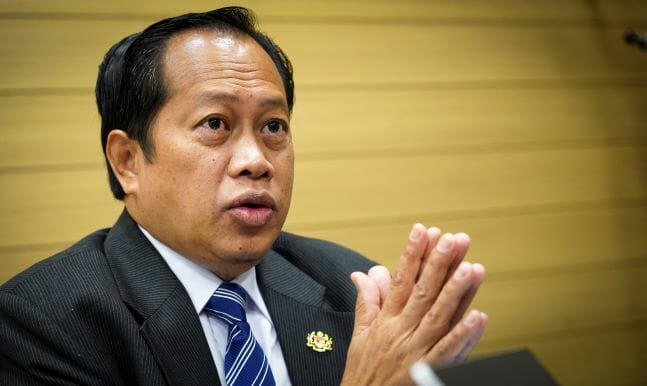Malaysia’s construction sector is expected to see more growth entering the second half of 2024, said Deputy Works Minister Datuk Seri Ahmad Maslan as construction works, especially those involving allocations from the government, will begin to enter the implementation phase.
He said, for example, several multi-billion-ringgit packages allocated for the Pan Borneo Highway will have their contractor proposals finalised in June or July.
“Additionally, infrastructure projects such as schools, hospitals, clinics, and roads are also in the pipeline. Letters of acceptance for these development projects will be issued soon. Therefore, we believe that the pace of development in the second six months of 2024 will have a multiplier effect on all parties involved.
“There are many networks and hundreds of components used for the construction of each building or structure, providing a positive spillover effect to stakeholders,” he said at the Malaysian Industrial Development Financial Bhd (MIDF) luncheon talk titled ‘Awaiting Take-Off of the Construction Sector’ in Kuala Lumpur today.
Looking ahead, Ahmad Maslan said the country’s construction sector will continue growing positively this year, spurred by a budget allocation totalling RM180 billion for development works.
The construction sector is driven by two large fund allocations from the 2024 budget, totalling RM90 billion for development expenditure. “This RM90 billion is the amount allocated for the construction industry by the government for this year, of which 40 per cent will be implemented in 2H24.
“When I spoke to the Construction Industry Development Board (CIDB), they said there is another RM90 billion from the private sector, making a total of RM180 billion for the construction sector from both government and private sectors available to be captured.
“Therefore, the construction sector will become more active in 2H24 when many regular open tenders and pre-qualified selected tenders will be announced by the government,” he added.
Meanwhile, Ahmad Maslan also mentioned that his ministry will propose the use of closed-circuit television (CCTV) surveillance at construction sites to ensure government projects run smoothly and according to schedule.
He said this is to make sure that appointed contractors carry out their responsibilities properly and adhere to the established timelines.
“I think it’s a good proposal to implement and involves a reasonable cost. Monitoring can be done simply through smartphones,” he noted.
MIDF chairman Tan Sri Abdul Rahman Mamat said the use of technology and automation can benefit the construction sector through increased productivity and quality, making it more competitive internationally.
He said that, as such, stakeholders, along with sector players, must align efforts to empower the sector in line with digital economic demands to achieve the goals of the National Construction Policy (NCP) 2030.
“Digitalisation, driven by Industry Revolution 4.0 (IR 4.0), is reshaping the construction landscape, reducing reliance on human resources, and enhancing operational efficiency.
“It facilitates quicker data sharing, enabling more informed decision-making by stakeholders,” he added.
Abdul Rahman also emphasised that the consistent expansion of Malaysia’s economy has laid a robust foundation for the development of its construction sector.
He said this economic growth has spurred a heightened need for residential, commercial, and industrial structures, along with a surge in investment in infrastructure projects.
The NCP 2030 is one of the key initiatives by the government to modernise and transform the construction sector through digitalisation.
The policy acts as a roadmap for inclusive and sustainable national development by 2030, serving as a reference guide for both the public and private construction sectors.









